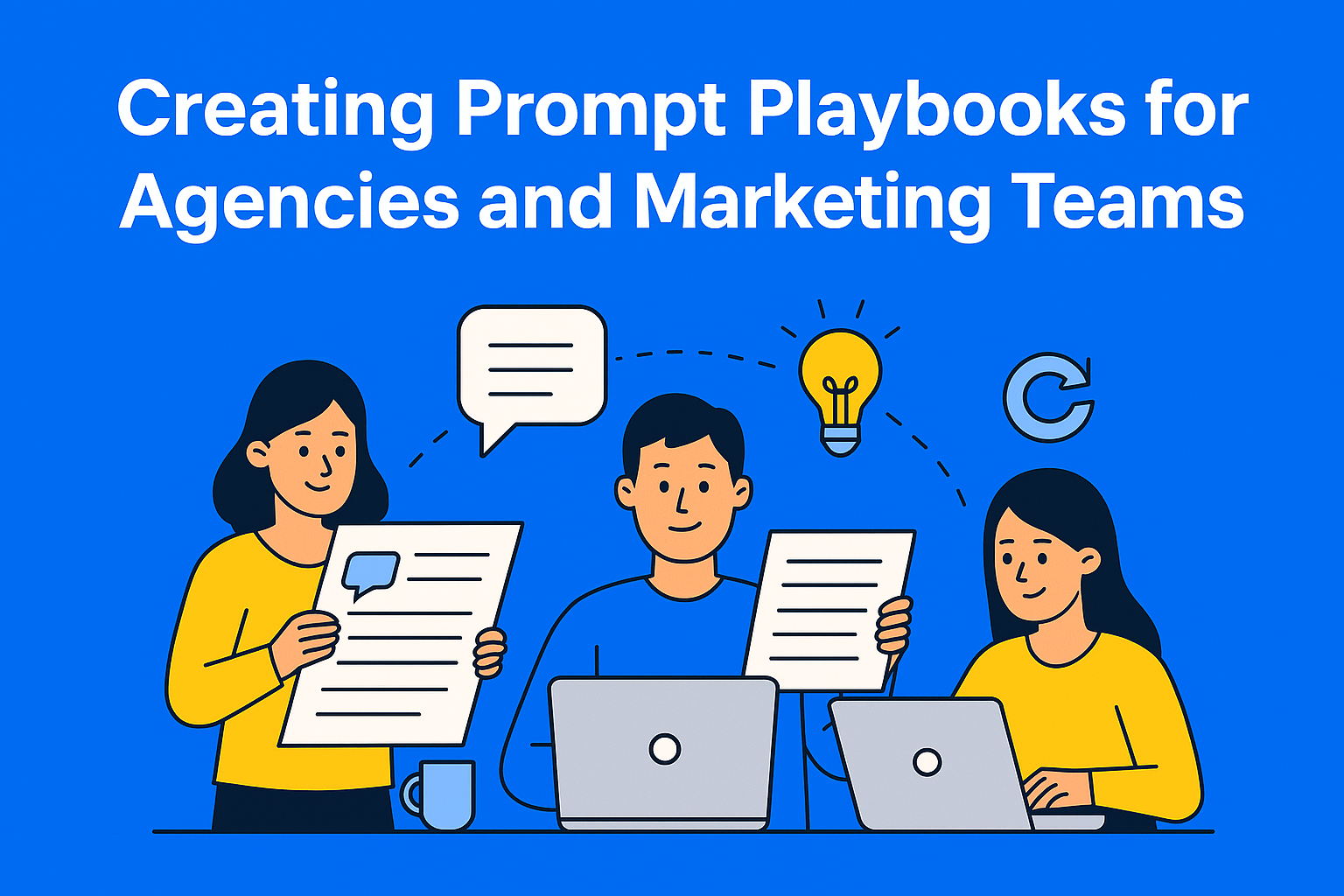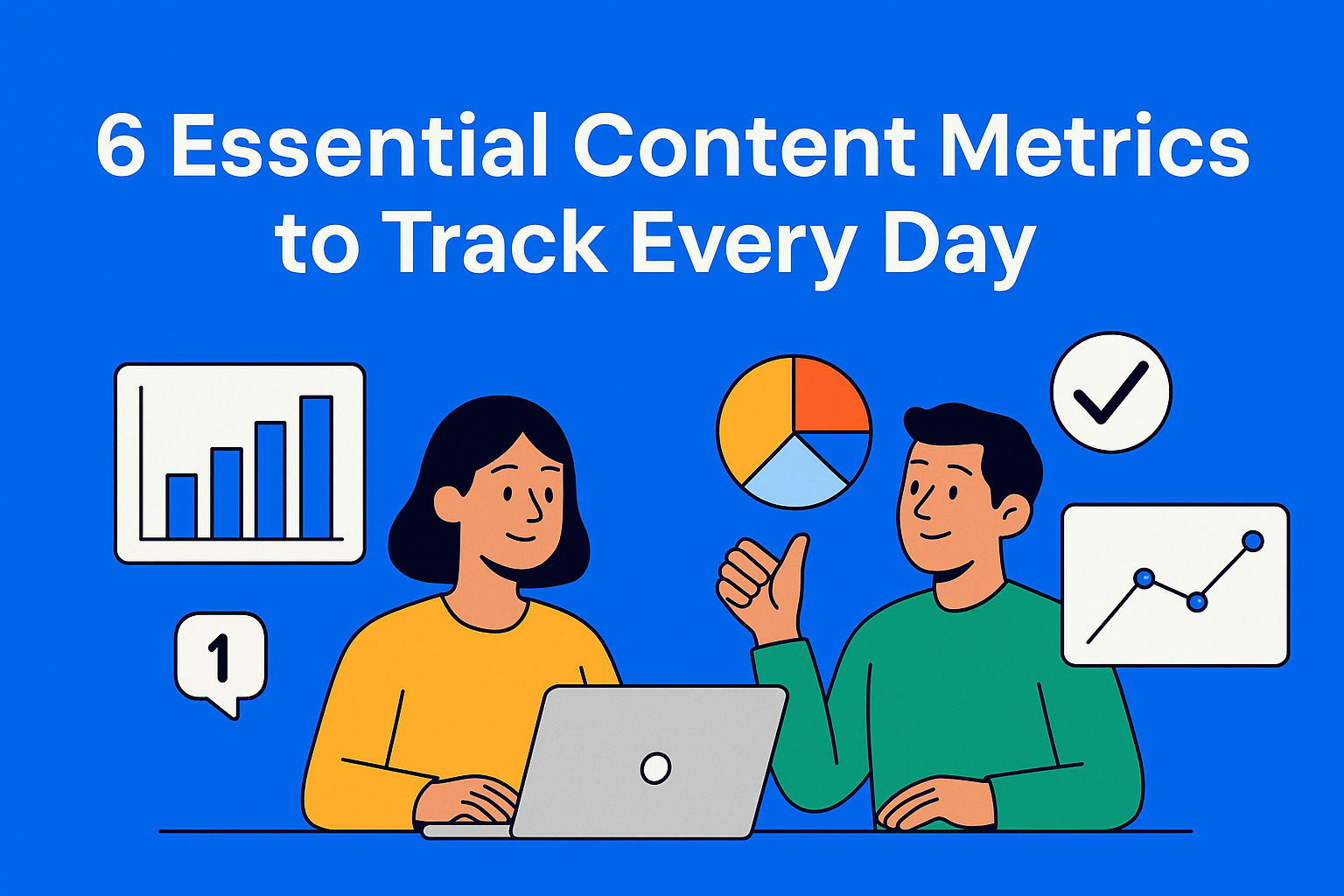Creating Prompt Playbooks for Agencies and Marketing Teams
Learn how to build a simple and effective Prompt Playbook that helps marketing teams and agencies use AI smarter. Discover how to create consistent, high-quality content, save time, and boost collaboration - all with practical, easy-to-follow steps.

In a world where AI is becoming a normal part of everyday business, more and more marketing teams and agencies are using tools like ChatGPT and other generative models to create content faster. But there’s one problem: many people still aren’t sure how to get consistent and good results. That’s where the prompt playbook comes in - a simple guide that helps teams use AI in a smart, clear, and creative way.
Key Takeaways
- Prompt playbooks streamline AI use - They give marketing teams clear guidelines to generate faster, more consistent, and high-quality content.
- Consistency boosts brand trust - With shared tone, examples, and structure, every team member creates content that sounds and feels on-brand.
- Good prompts are specific and goal-oriented - Vague inputs lead to weak outputs. Clear, contextual prompts deliver better results across platforms.
- Playbooks evolve with practice - AI tools improve rapidly. Collect team feedback, update examples regularly, and assign ownership to keep it useful.
- Results are measurable - Track speed, quality, engagement, and internal feedback to prove your playbook is driving performance - and improve from there.
What exactly is a prompt playbook?
A prompt playbook is a document that contains best practices, examples, and guidelines for creating prompts (AI inputs) that your team uses when working with AI tools. You can think of it like a recipe book - instead of cooking meals, you’re “cooking up” ideas, texts, ads, and marketing campaigns with the help of AI.
For marketing teams, a prompt playbook helps everyone stay on the same page about how to use AI. It brings consistency, faster work, and better collaboration. Instead of everyone working in their own way, the whole team follows the same proven directions.
Why it’s important for agencies and marketing teams
Agencies and marketing teams often work with many clients, projects, and communication channels. Without a clear strategy for using AI, it’s easy to waste time testing and rewriting texts. A prompt playbook prevents that by defining what works, what doesn’t, and how to make sure AI always creates content that fits the brand’s tone and style.
For example, if an agency has one client in tech and another in fashion, each one will have its own set of prompts. That way, AI knows how to communicate with the audience, no matter the industry.
Also, a prompt playbook helps teams maintain a consistent brand voice. When multiple people use the same guidelines, all content feels unified, which strengthens brand recognition and builds trust with the audience.
What makes a good prompt playbook
A good prompt playbook isn’t just a list of sentences to copy. It’s a structured document that explains the context, goals, and communication style. Here’s what it should include:
- Prompt goal - what you want to achieve (for example, writing a blog post, analyzing competitors, generating ad ideas).
- Examples of successful prompts - tested prompts that deliver great results.
- Tone and style - how AI should write: formal, friendly, professional, relaxed, etc.
- Parameters and format - how long the content should be, which platform it’s for, and what details to include.
A good playbook also includes a section on common mistakes and tips to avoid them. For example: don’t use overly general prompts like “Write a blog post about marketing” because they produce shallow results. Instead, use detailed prompts with clear context and purpose.
How to create your own prompt playbook step by step
1. Define your team’s goals
Start by thinking about what you want to achieve with AI. Is it writing blogs, creating ads, analyzing data, or researching your market? Each goal needs a different type of prompt.
2. Collect existing prompts
Your team is probably already using AI. Gather all the prompts that have worked well. Analyze why they were successful - was it because of tone, length, or structure?
3. Test and refine
Don’t rely on a single example. Test different versions, changing keywords, order, and instructions. AI reacts differently depending on how the prompt is phrased.
4. Organize by category
Divide your prompts into sections:
- Copywriting - everything related to writing engaging and clear text, such as headlines, ads, or product descriptions.
- SEO content - texts that help your website rank better on search engines, like blogs and meta descriptions.
- Social media - posts and hashtags you share on Instagram, LinkedIn, or other platforms.
- Email marketing - subject lines and messages you send to users to remind them about your brand or inspire action (CTA).
5. Document everything
Write down your prompts and results in a shared document - EasyContent, Google Docs, or Notion. That way, everyone on the team can access it and add new examples.
6. Train and share knowledge
Host short workshops or team sessions to show how to use the playbook. This helps everyone understand the logic behind prompt writing, not just copy examples.
Best practices for maintaining and improving your playbook
A prompt playbook isn’t a “set it and forget it” document. AI tools constantly evolve, so your prompts should evolve too.
Here are a few tips:
- Appoint someone responsible for updates (an AI champion). They track new techniques and add them to the playbook.
- Create a feedback system. If someone finds a better prompt, they should share it with the team.
- Set clear KPIs (key performance indicators) - measure how much time you save, how content quality improves, or how audience engagement grows.
- Automate where possible. Some tools let you turn prompts into templates everyone can use easily. For example, in EasyContent you can create templates for each type of content and include your playbook so everything is in one place and accessible to everyone.
A mini example of a prompt playbook for a marketing team
To make this clearer, here’s what a small section of a prompt playbook might look like:
Section 1: Blog post ideas
Prompt: “Create 10 blog post ideas for a B2B SaaS company targeting small businesses. Focus on practical topics that bring value and are easy to apply.”
Section 2: Social media posts
Prompt: “Write three versions of a LinkedIn post for a new product launch. Keep it professional but engaging and easy to read.”
Section 3: Email marketing
Prompt: “Write two subject line variations for a re-engagement campaign aimed at inactive users. Keep the tone warm and motivating.”
These kinds of practical examples save time, make learning easier, and reduce the risk of inconsistent content.
How to stay consistent across all channels
Consistency is key to building a strong brand. If AI creates content for blogs, posts, and email campaigns, there needs to be a unified tone and visual identity. A prompt playbook helps with exactly that.
It ensures that every post - whether on Instagram, LinkedIn, or your website - sounds like it’s coming from the same brand. This builds audience trust and makes teamwork smoother.
How to measure the success of your prompt playbook
To make your playbook effective, you need to track results. Here are some metrics that show how well it’s working:
- Content creation speed - how much time it now takes to produce content.
- Quality - fewer edits, more consistent results, and better audience response.
- Engagement - higher CTR and longer page visits.
- Client feedback - whether clients are happier with communication and outcomes.
Conclusion
Using AI tools in marketing is becoming the norm, but they give the best results only when used smartly. The prompt playbook bridges the gap between random testing and organized, productive work.
If your team doesn’t have a prompt playbook yet, now is the perfect time to create one. Start small - document what already works, test new ideas, and share knowledge with others. Soon you’ll see how AI becomes your best teammate, not just another tool.






